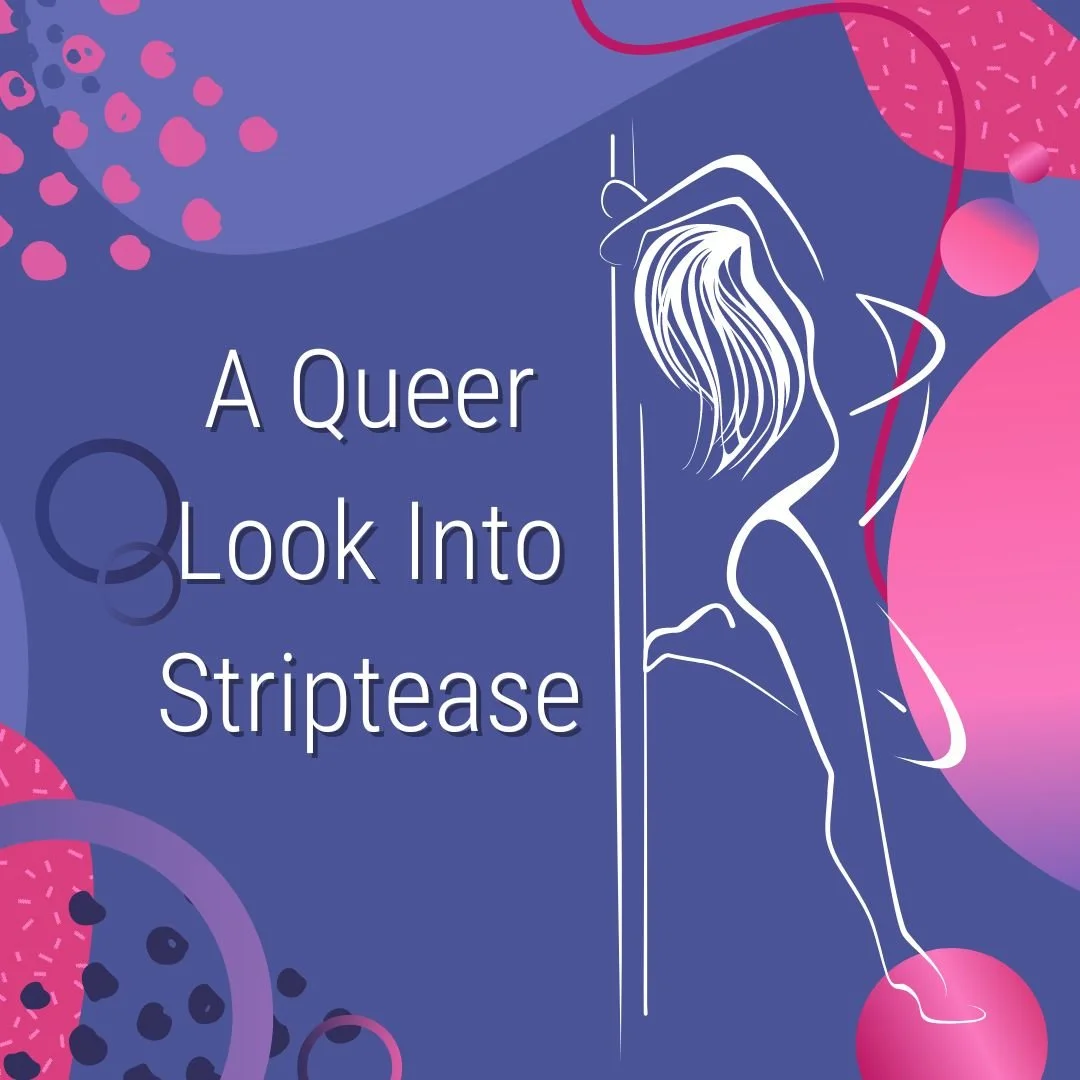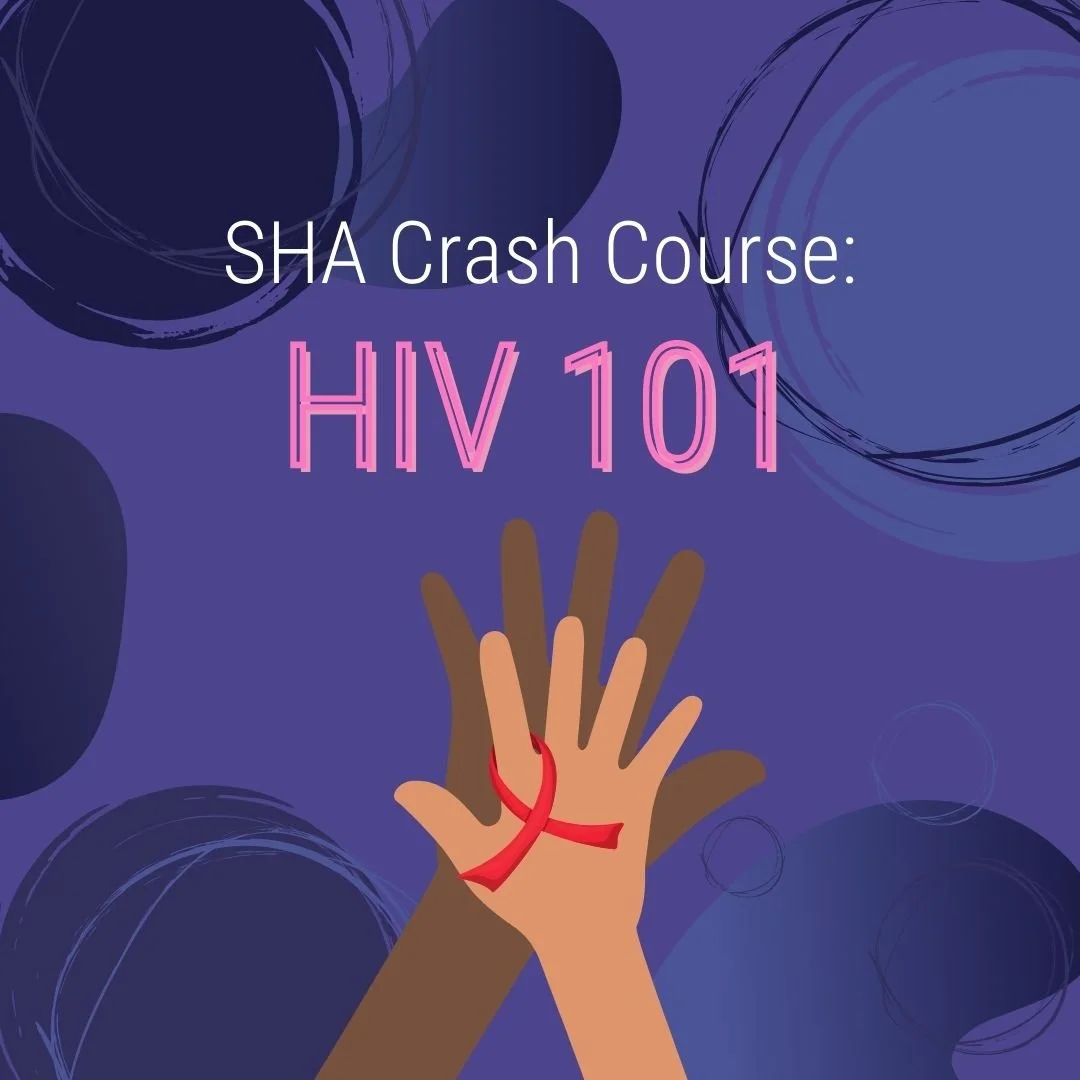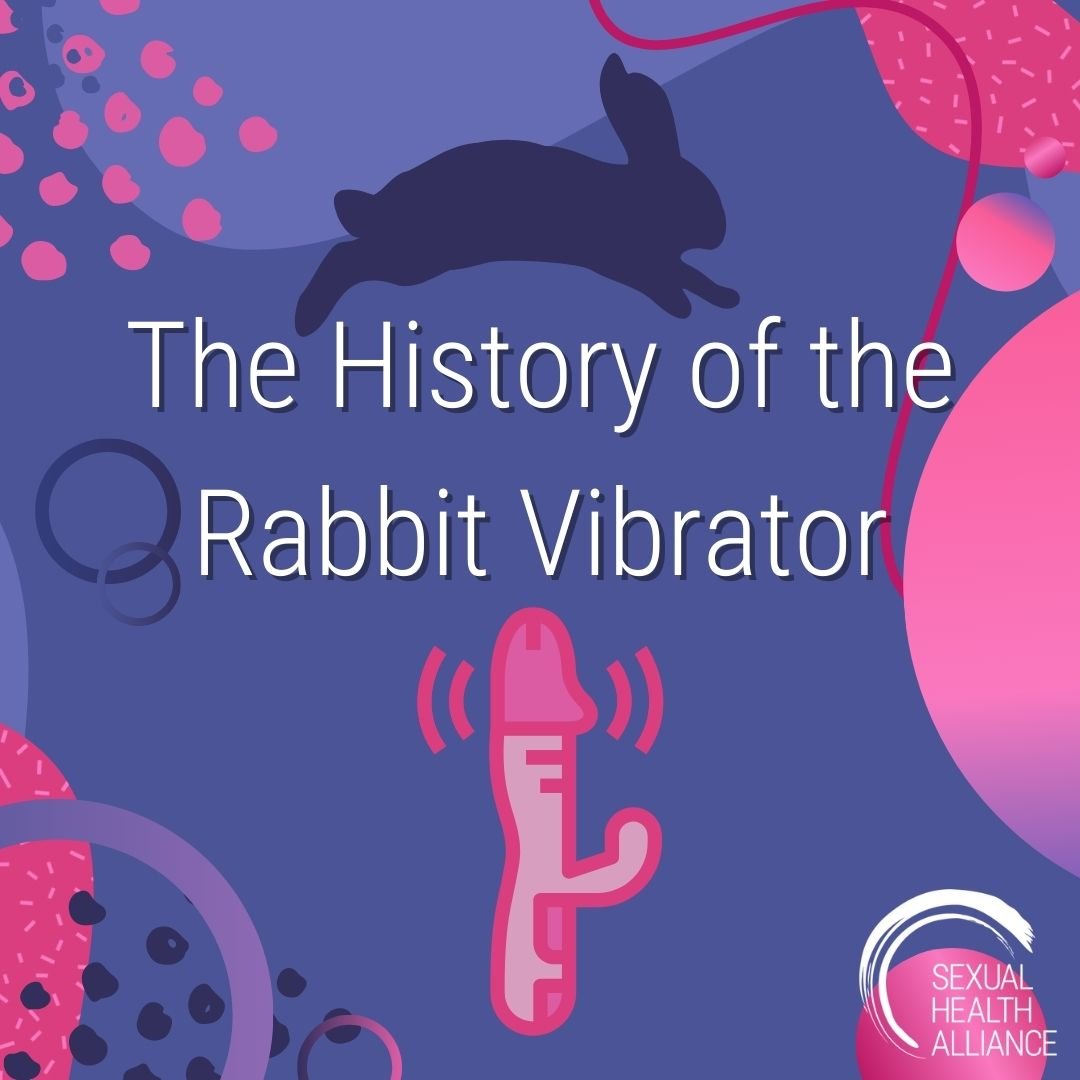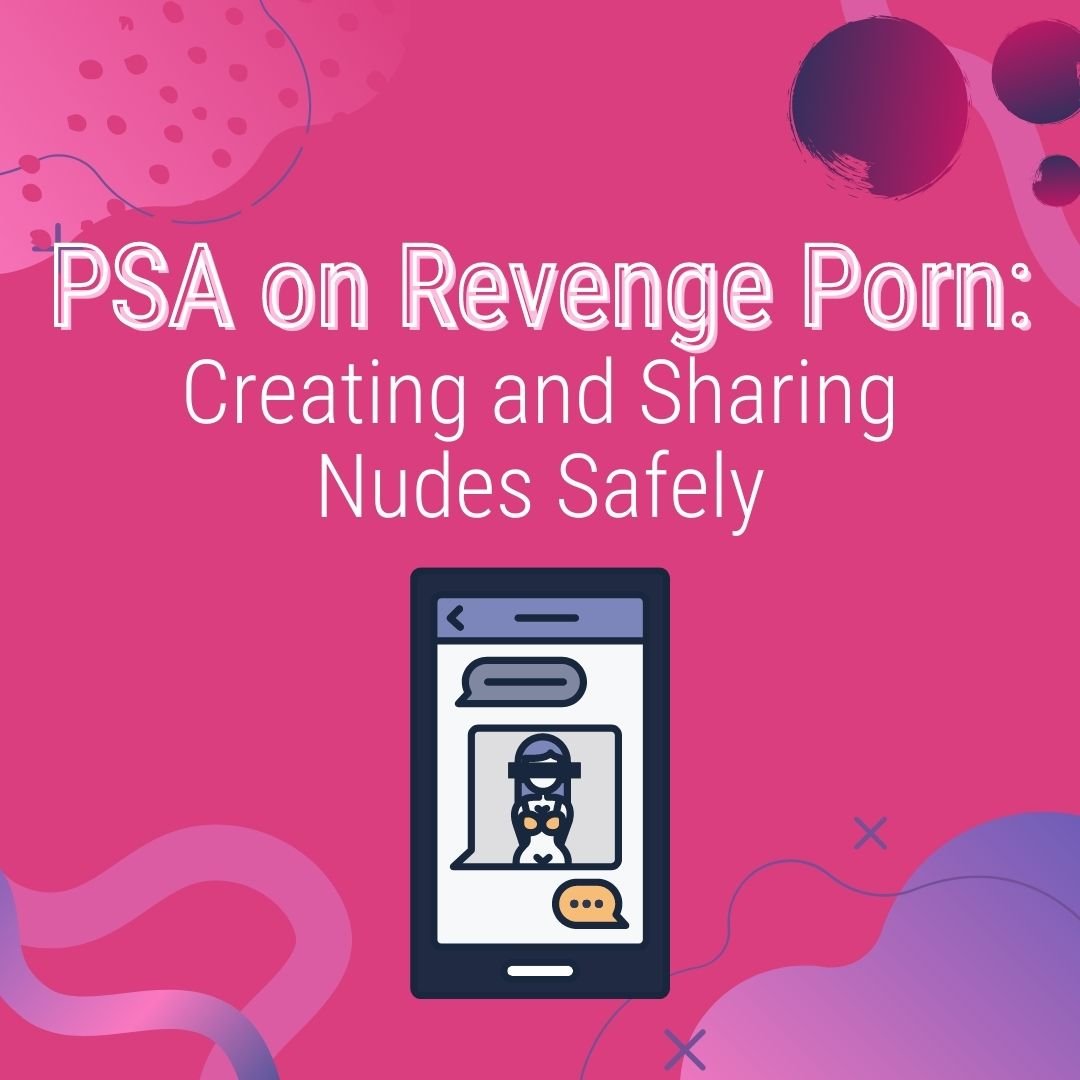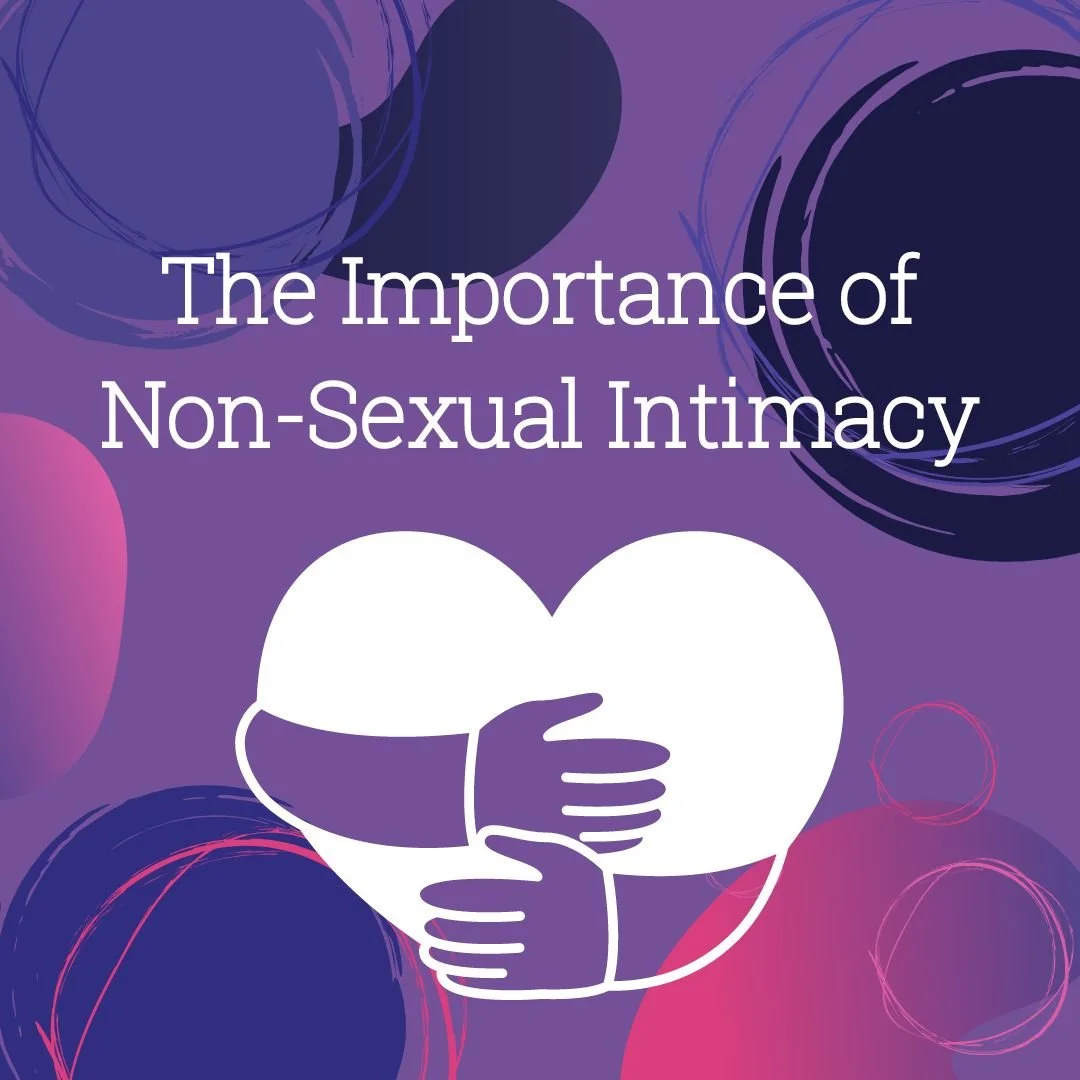Just when you thought the discussion of sex was taboo enough, I welcome you to the act of degrading during sex. A quick google search summarizes a “degradation kink” as being the “consensual practice of using derogatory names and phrases to humiliate and degrade your partner during sex.” Degradation can fall under the sadism/masochism umbrella and can often be seen in a dominant/submissive relationship, however, note that degradation can take place outside of this dynamic. On the complete opposite side of the spectrum is the act of praise during sex, as the name suggests it is based on words of affirmation, and positive reinforcement. So why do some people enjoy these? Is it possible to find pleasure in both elements? And how can you incorporate this into your sex life?
My Period, My Problem: Cycle-Tracking Safely in Today’s World
After the Supreme Court decision that overturned Roe v. Wade, those at risk for pregnancy across the United States are faced with a new problem: long-used period-tracking apps that could become a political tool that uses your data against you in court. These apps store the data of your menstrual cycle to predict and support the changes in your hormone levels, but now many fear that this stored data can be used as proof of an abortion.
The menstrual cycle is an enigma for many, and requires a deep understanding of your biological processes to track or predict changes in your cycle. This is most often important for tracking your period and the hormonal changes that affect your mood, skin, energy, and more, as well as tracking your fertility to manage conception. For some, cycle tracking is a great way to prevent contraception, while for others, cycle tracking is an important part of intentional conception. In the past few years, developers have excelled at putting cycle-tracking apps on the market that do all of these things, as well as offer information, resources, and community support to their networks.
Highlights from SHA’s Sexceptional Summit Engaging with the Media: Building a Business and Online Presence
Over the last weekend of July, SHA held a two-day virtual conference on Engaging with the Media: Building a Business and Online Presence. We heard from sex and social media experts, including world-renowned clinical psychologist and author Dr. David Ley, sex and relationship therapist and educator Dr. Chris Donaghue, couples’ counselor and sex therapist Jen Meyer, marketing expert and MŌN app founder Cale Jones, SHA founder Heather McPherson, Netflix phenome and social media influencer Alyssa Ljubicich, founder and CEO of ethical porn website afterglow Lilly Sparks, and sex therapist and sex worker Jasmine Johnson.
Additionally, Dr. Ley facilitated master panels on journalism and how to charge money for your sexpertise. The first panel featured journalists Jelena Kecmanovic, Brian Smith, Ryn Pfeuffer, and Hallie Lieberman. Then, the Monetizing Exposure panel brought back Jasmine Johnson, Lilly Sparks, and Heather McPherson with the addition of BDSM author, educator, and social media influencer Midori of PlanetMidori. Overall, the Sexceptional Summit covered media strategies and tools to flesh out your authentic sexuality brand, get your particular style of sex-positive message out there, position yourself as an expert, and create a growing community.
The Effects of Stopping Birth Control
Just when you thought having a uterus and having your hormones change couldn’t get any worse, I present to you the multiple negative effects of stopping your birth control pill. It is no surprise that stopping any form of birth control can have drastic effects on your mind and body; your hormones have already gone through drastic changes to now begin the process of reverting back. Whatever your reason is for stopping birth control, whether that is wanting to achieve conception, or you are experiencing negative side effects—this article will go over the possible side effects of stopping birth control, and how to do so safely. When discussing birth control, I do so in the context of hormonal birth control—any contraceptive that uses synthetic hormones to prevent pregnancy (therefore excluding methods like condoms). Hormonal birth control includes the pill, IUD, arm implants, ring, patch, and injectables.
What Asexuality Teaches Everyone
Everyone tells you that your 20s are the perfect time to discover what you enjoy sexually. This, in turn, places unnecessary pressure on you to explore, even if it may not be something you’re actually interested in, or to worry about why you aren’t actively exploring. No one ever suggests you explore nonsexual romantic relationships or explains what that could mean for you, most likely because most people don’t believe they exist. Surprise! They do. It’s called asexuality.
What is asexuality? Angela Chen’s book Ace: What Asexuality Reveals About Desire, Society and the Meaning of Sex defines asexuality as “the lack of sexual attraction.” Asexuality is a sexual orientation, similar to someone being gay, bisexual, or pansexual. Similarly, asexuality is an inherent, unchosen part of someone’s identity. Chen’s broad definition of asexuality leaves room for individuals to identify within the spectrum rather than a box. Learning about the ace spectrum opened my eyes to a full new understanding of what love and relationships look like.
Period Sex in the Media
Historically, menstruation has been depicted in Hollywood as a disgusting, uncomfortable, and shameful event in a woman’s life. In films such as Carrie (1976) and My Girl (1991), the start of a period by protagonists is portrayed as a horrifying brush with death, in which both women believe they are bleeding out. In other movies such as Superbad (2007) and Blue Lagoon (1980), the female characters are subjected to shame and ridicule for their biological functions, particularly at the hands of their male counterparts.
Hollywood has come a long way in the past decade, with an increasing number of female writers and directors working to destigmatize this phenomenon and create a positive representation of periods for younger viewers. Media depictions have slowly shifted to biological processes signifying womanhood, and now to just a normal part of women's lives. In the film 20th Century Women (2016), the character Abbie played by Greta Gerwig passionately announces that everyone should be comfortable using the term “menstruation” instead of shying away from women's bodies. This scene stands out for its portrayal of periods within the film but also for its general critique of how men and male-dominated spaces further suppress womanhood through their periods.
A Queer Look Into Striptease
The history of sex work is deeply rooted in the queer community, particularly queer people of color in marginalized areas. In more recent years, queer people have reclaimed certain sex work industries and morphed them into expressions of self-love and power. An example of this is the burlesque industry, which has roots in performance dance but also stripteases sex work. In the 20th century, this art was primarily done by cisgender white women, but now some of the most successful performers are BIPOC such as Jeez Loueez and Samson Night. Burlesque as an industry has begun taking a queer approach to gender and sexuality, using costuming, music, dance, and striptease to play with these concepts.
Queer women have found homes in burlesque troupes like Honey Burlesque, a collaborative of queer women and non-binary people each with their own acts and stage personas. Honey Burlesque hosts special events and participates in queer festivals like Girls in Wonderland, and the Orlando pride celebration. Another troupe that specializes in more modern styles of burlesque is Les Vixens, the lesbian collaborative. These groups create intentionally queer spaces for performance and business and uplift other queer dancers in the process.
Sexually Explicit Media + AirDrop Laws
In the digital age, it’s no surprise that sexually explicit content has permeated from the physical plane into our technology. However, since technological usage is such a prevalent part of our every day, this comes with moral and legal issues related to consent and mental health. The term “cyber-flashing” is now used to describe the unsolicited or nonconsensual sharing of sexual content via digital technology, including text messages, social media, and Bluetooth capability. Due to the nature and commonality of male sexual violence and harassment against women, this concept should be contextualized as gendered, intersectional, and contingent on nonconsent. Cyber-flashing thrives in a sexist culture that works to take away women’s sexual autonomy. This oppressive culture is perpetuated by demeaning advertisements, media portrayals, and the commodification of the female body in the fashion and plastic surgery industries. For this reason, cyber-flashing fits into the “raunch culture” that Morehead State University Professor of Sociology and Gender Studies Bernadette Bardon discusses by enabling individuals to take advantage of technological advancements and the stigma around women’s sexuality.
Shedding Some Light on Shadow Banning
“Shadow banning” is likely a term you have heard or used online without really knowing much about it. As the name suggests, shadow banning thrives outside of the light of public knowledge and institutional acknowledgment. The term is more often named by social media users rather than the social media companies, who tend to underplay its algorithmic role or completely deny its existence altogether. After social media creators noticed decreased engagement on their more risqué posts, users began speculating whether the sites themselves had something to do with the trend. Thus, shadow ban was coined. Shadow banning refers to social media posts or accounts being hidden from the Explore (or similar) pages, posts or accounts being more difficult to search for, and posts or accounts being indicative of more critical moderation, which might later result in post removal or account blocking. But, because institutions refuse to validate these trends, much of the knowledge on shadow banning surrounds user perception, qualitative study, and the sites’ “vaguely inappropriate content” policies. As this particular content does not outright go against the Community Guidelines, it cannot be removed at this point.
SHA Crash Course: HIV 101
HIV, or human immunodeficiency virus, is a virus that infects the body and, when left untreated, can develop into AIDS, or acquired immunodeficiency syndrome. HIV is spread through bodily fluids—including blood, semen, rectal and vaginal fluids, and breast milk, which enter the thin membrane or open skin of another person. Transmission can occur through sex, most commonly anal sex, but also through vaginal and oral sex. You can also get or spread HIV through sharing needles with another person, most commonly to inject drugs. On occasion, mothers can unknowingly spread HIV to their children during pregnancy and birth. There is currently no cure for HIV or AIDS, but there are medications that can decrease the transmission rates of HIV and help manage symptoms to live.
Pre-exposure prophylaxis, or PrEP, is a medication that decreases your likelihood of contracting HIV, even if you are in transmission contact with an HIV-positive person. According to the CDC, PrEP, if taken correctly, is 99% effective for sex and 74% effective for injections. Combining PrEP with other measures like barrier contraception and hygienic practices is the best way to ensure your protection from transmission. Currently, there are two approved pill forms of the drug and one shot; consult your doctor about which of these methods is best for you and your lifestyle. Most medical insurance plans including Medicaid will fully cover PrEP, but for anyone without insurance, there are programs available.
Building an Online Presence Around Obstructive Censorship Rules
As we have seen with many Supreme Court decisions, especially recently, the notion that nine legal professionals have the ability to dictate what others can do with their bodies and protected freedoms is not always what it seems. The Potter Stewart test refers to a Supreme Court opinion that classified hard-core porn as “hard to describe” but “I know it when I see it.” This very definition indicates that what “should” be censored is incredibly subjective. Further, the distinctions between what constitutes artistic expression and pornography are almost indistinguishable. Nudity in art culture has also existed since Ancient Rome, but these figures are often praised instead of being seen as taboo, although this does vary based on location and governing body (i.e., religious power associations).
The intentions behind censorship policies and the reality of their functioning are thus wildly different. Censorship policies are intended to protect people, specifically children, from obscene content, but in reality, censorship policies can be sexist, racist, and discriminatory to sex workers and sexual education content. This points to the performance of policy within society; often the creation of the rule is much different than its implementation. Additionally, there becomes a strict distinction between the public and private spheres. This binary is complex because, while you can generally access social media platforms from anywhere including the comfort of your own home, your created content is then accessible to large networks of people. Therefore, digital surveillance and rights to privacy rely on each other, potentially in a detrimental way, in the modern-day creation of online presence.
Bums, Boobs, and Suspenders: The History of Lingerie
A quick google search and use of the Cambridge English Dictionary defines lingerie as being “women’s underwear.” However, when scrolling down the page and seeing an insert from the American Dictionary, lingerie is now defined as “women’s underwear or clothing worn in bed.” The American Heritage Dictionary takes this further with its elaboration on lingerie: “women’s undergarments or sleepwear, especially when designed to be visually or sexually alluring.” When the definitions alone seem contradictory and unclear, online retailers have only added to the confusion. Some online retailers have one category for simple bras and briefs, and a different section for lingerie. In other cases, everything is thrown together. Sometimes bras and briefs do appear in the lingerie category, but it usually tends to be the fancy lace ones rather than anything simple and practical. Estelle Pulestone, lingerie fashion blogger, discusses that this inconsistent advertisement is extremely confusing for customers. She notes, “some people will tell you that underwear is the basic stuff, and lingerie is for the boudoir. But what is one person’s special occasion set to someone else’s everyday one, so who are brands to tell us which bras are stylish or sexy and which aren’t.” This idea that only pretty or lacy undergarments can be considered ‘lingerie’ can stem from the word originating in France, “a place that’s been long associated with beautiful laces and fashion” states Pulestone. With its close association to sex, advertisements for lingerie seems to suggest that only pretty underwear is acceptable in the bedroom. This is entirely false. All underwear can be lingerie, and you can feel sexy in any underwear, whether that’s some new floral briefs, or a beige nursing bra.
Even More Books to Match the Summer’s Heat
For SHA’s second dive into the erotica pool, we are looking at a diversity of works released in the past few years that have made a splash with readers. (Hang in there – the summer puns end here.) These romance novels are as entertaining as they are sexy, making them a perfect beach or bedside read this summer. From all-out roleplay fantasy to pages full of sexual tension, there’s something for all readers, even those who are new to erotica and romance books.
Gummy Bears, Tortilla Chips, and Chocolate Ice Cream: A Discussion on Period Cravings
Hormones are the primary cause for the reason you have a hankering for Ben & Jerry’s Phish Food ice cream (totally not based on actual personal cravings). A 2016 study revealed that the changes in levels of estrogen and progesterone result in cravings for high-carb and/or sweet foods before your period begins. Whilst hormones play the more prominent role in these sudden cravings, it has also been shown that eating these sweet treats, and honoring your cravings, can help you to combat the not so pleasant premenstrual stage of your cycle. Consuming starchy and sweet foods results in a release of serotonin, and in turn, a feeling of happiness. This can feel especially good when experiencing the hell that is premenstrual syndrome. It is common to experience these food cravings, compulsive eating and strong food cravings before a period can be a sign of premenstrual dysphoric disorder (PMDD). Further signs of PMDD include: forgetfulness, paranoid, panic attacks, crying spells, back pain, and heart palpitations.
Having these cravings does not necessarily mean that you are pregnant. While it is true that cravings and hunger are a common symptom of pregnancy, so are aversions to certain foods. You may have previously loved spaghetti carbonara, but now even the sight of it puts you off. Food aversions are very common in pregnancy, but usually not in the premenstrual stage. Furthermore, there are other symptoms of pregnancy that will appear significantly before you start getting cravings, such as missed periods, nausea/morning sickness, and a change to your nipples. Cravings related to your period typically start around 7 to 10 days before your period starts, this is usually accompanied with other PMS symptoms such as: mood swings, tender breasts, and the lovely period poops (stinky but normal!). It is crucial to listen to your body and its cravings. If it’s telling you to grab a double decker bar, you are allowed to do it! Whilst overindulging on the daily is not recommended due to the lack of nutritional value, you are still allowed to eat more or eat differently to what you normally do. Unfortunately, a lot of the foods that are a period cravings tend to result in your body feeling worse.
Keeping the Spirit of Pride... After Pride
With June in the rearview, it’s tempting for allies to move on with their summer and leave the spirit of pride with the month. For LGBTQ+ people, pride has never been confined to one month and the oppressions and journeys with identity that we face continue on. While there might not be any more parades to join this year, there are plenty of other ways to support your queer and trans friends and family as well as the community at large.
I want to start by sharing a note on what pride is and what it looked like this year in particular. Historically, pride was born out of a legacy of protest from LGBTQ+ people fighting for rights and representation, and notably queer and trans-BIPOC. Even though we most often see (and feel!) the spirit of “happy pride” and pride as a celebration of identity and life, pride does not exist without its history of oppression and resistance, of surviving and overcoming. From commercial pride parades to historic “gayborhoods” (like the Castro in San Francisco), the spirit of pride lives in the existence of queer and trans people and the communities they foster. Still, this idea of the celebration of identity is so important; it is a beacon of hope for so many, and a reminder for many more that they are not alone in the challenges they face.
In the money-centered world we live in, many profit off of the lives of LGBTQ+ people during pride month without paying respect to the history, culture, or needs of the community. Known as “Rainbow Capitalism” or “Pink Capitalism,” this scheme by major companies uses the signifiers of pride and the LGBTQ+ community (like the pride rainbow or the pink triangle) to market to and profit off of individuals. The exploitation of any marginalized group is harmful to their existence and historical legacy, but it’s not that simple. In my view, there are small benefits that come with this movement; many of these organizations donate to truly lifesaving nonprofits like the Trevor Project and GLSEN (although they can and should be donating more!). In a simple way, many people also find solace in material things that advocate for their identities and signify their place in the community. As trivial (and yes, capitalist) as it is, a silly rainbow candle or pride outfit can brighten one’s day. I’ll always advocate for shopping small and local (handmade goods are the best!), but it still brings me joy and a laugh to see a ridiculous shirt such as this one with so many different pronouns on it. After a thorough discussion with other queer people, we have unanimously decided that rainbow capitalism absolutely does not apply to pet merchandise.
Sexual Health Alliance Statement on the Decision to Overturn Roe v. Wade
It has been three weeks since the overturning of Roe v. Wade by the United States Supreme Court. Like many of you, the Sexual Health Alliance team was and still is shocked, confused, hurt, frustrated, scared, and angry as hell. After the initial ruling, we took time to ourselves to mourn and process the news, though, we admit, we are still processing and we will probably always be trying to process this horrific act of terror on bodily autonomy in our country. we knew this subject, and our reaction to it, would need to be handled with care–especially since your SHA team is comprised of well-educated white women, arguably the group who will always have access to abortions. Adding to the chaos that was that fateful Friday and the following weekend seemed futile to us. The news had spread, we were all made aware, and we were all in dread.
Now that some time has passed and our wounds have begun healing into scars, we must continue doing what SHA has always done: provide up-to-date, accurate, and celebratory sexual information. From the very beginning, we have and always will use our platform as a safe space for sharing resources, dialogue, and community.
The Shift From Body Positivity to Body Neutrality
The idea that you should “love yourself” has been preached for years. We are taught to “love” our bodies and be positive about them, talking negatively about ourselves is frowned upon and shamed. In the context of sex, we are taught that confidence in our bodies is key, that if we feel self-conscious, we will have “bad sex.” The body positivity movement, an unofficial social media campaign that bases on loving your body no matter what, had good intentions, it has slowly turned to something far less inclusive. This article will look at the origins of ‘body positivity,’ and the way it has become flawed as time has passed, as well as discuss the increasing conversations around body neutrality.
The body positivity movement is more commonly associated with the late 2010s and boom of social media thanks to the tagging of photos with #BodyPositivity on Instagram. Whilst it is true that body positivity was picked up in the late 2000s, it actually began in the 1960s. In New York City, the “Fat Acceptance Movement” had begun, with the fundamental concept to campaign for the normalization of bigger bodies in society. The previous founding of the National Association to Advance Fat Acceptance (NAAFA) also boosted this interest in “fat liberation.” NAAFA states that their central philosophy was to “change society, not ourselves.” Again, while this movement started off well, there were obvious flaws and acts of prejudice that we can still see today. NAAFA chair Tigress Osborn recalls that “many white activists believed that because Black communities and other communities of color seemed to be more accepting of fat people, that meant fat people of color simply didn’t need fat activity.” This is an entirely false notion which can still be seen today in the body positivity movement. Developments in the growth of media allowed for the spread of the body positivity movement, plus size models were now appearing on billboards in Times Square as well as campaigns appearing on social media such as Tess Holliday’s #EffYourBeautyStandards campaign in 2013.
The History of the Rabbit Vibrator
The majority of us probably spend little time considering the lives of our sex toys or how they came to be, however, after looking into the history of the Hitachi Magic Wand, it became clear that most popular sex toys have lived interesting lives, with histories that go beyond the need for self-pleasure. Arguably, after the magic wand, the rabbit vibrator is the most iconic vibrator. According to Cosmopolitan, “...the Rabbit vibrator is one of the few recognizable sex toys out there.” This sex toy was featured on Sex and The City, leading Charlotte into a masturbatory sexual awakening.! The rabbit vibrator is one of those sex toys that offer both clitoral and penetrative stimulation, making it a great toy to have in your arsenal. The vibrator is composed of “...an internal shaft for vaginal stimulation, and an external set of Rabbit-ears (though more modern design sometimes goes with a singular, wider, clitoral stimulator fin) that stimulate your clitoris.” There have been multiple different versions of the Rabbit but every model contains this sort of dual stimulation that allows for intense pleasure. Overall, this vibrator was revolutionary as it was the first dual stimulating vibrator that was on the market. The history of the Rabbit is one that involves obscenity laws, revolutionizing female pleasure, and normalizing female masturbation.
PSA on Revenge Porn: Creating and Sharing Nudes Safely
Sharing intimate media, sometimes called “sexting,” can be a special way to connect with other people, particularly one’s sexual partners, that is exclusive to the digital age. It is not always safe, though, and unfortunately can be manipulated by others with the speed and insecurity of the internet. Media shared with others or stolen off of personal devices can be distributed easily and quickly without the consent of the subject, which can lead to a number of personal damages including job insecurity, personal strife, and loss of family and friends. Nonconsensual pornography is defined as the sharing of sexually explicit content without the subject’s consent. This can take the form of photographs taken by the subject or of the subject, video recordings of the same nature, and hidden cameras, and is sometimes referred to as “revenge porn.” The center Love is Respect categorizes revenge porn as digital and sexual abuse, citing the manipulation and extortion that is exercised over another person.
The Importance of Non-Sexual Intimacy
Intimacy and bonding are essential for a healthy relationship. Furthermore, the act of touch significantly benefits both our health and happiness. Affection and physical contact boosts oxytocin levels, which boosts our happiness as well as enhances our bonding experiences. There are endless benefits to touch and non-sexual intimacy, this can be defined as any intimate act that is not sexual. You can curl up on the sofa with your friend to watch the latest episode of Stranger Things, engage in debate about the afterlife with a classmate, or vent about your stressful day at work to your sister. These acts of non-sexual intimacy are not restrained to being in a relationship. What is crucial is setting up boundaries and having clear consent before participating in non-seuxal intimacy. This could mean asking someone if the topic of debate is triggering for them, or making sure someone is comfortable with being held before you step forwards to hug them. Creating a safe and comfortable environment will increase the positive effects of non-sexual intimacy, allowing all involved to feel loved and engaged in the relationship.








